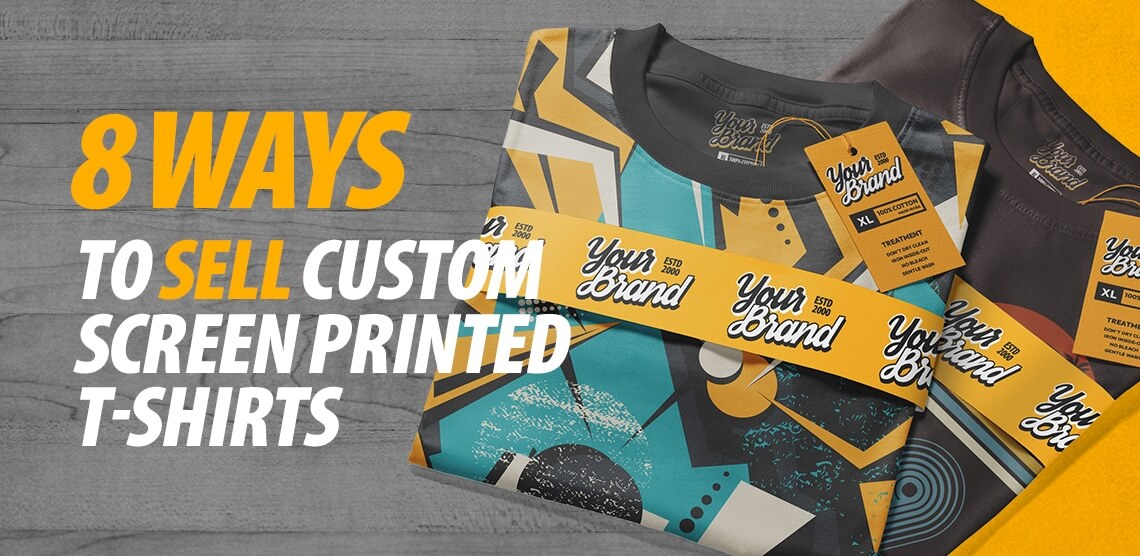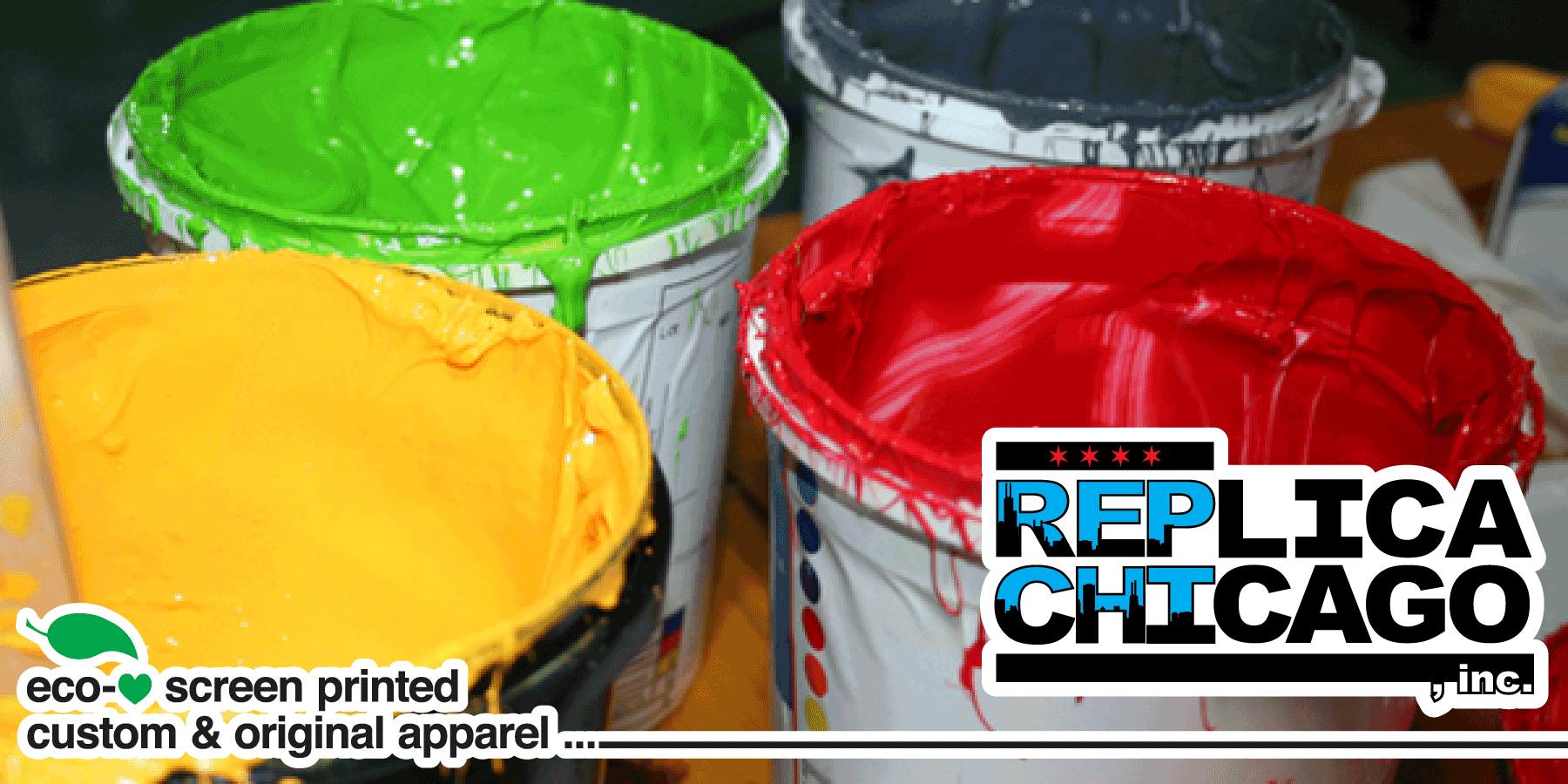Artistic Silk Screen Printing for Limited Edition Prints
Artistic Silk Screen Printing for Limited Edition Prints
Blog Article
Screen Printing Uncovered: Every Little Thing You Required to Find Out About T-Shirt and Garment Printing Methods
Screen printing is a remarkable method that combines art with strategy, providing limitless possibilities for creative thinking. Ready to discover the essential elements that make display publishing an art type?
The Basics of Display Printing: Exactly How It Works
When you dive into screen printing, you'll discover it's both a science and an art. At its core, screen printing involves creating a stencil, or screen, that allows ink to pass with only in specific locations.
Placement the screen over the textile, then utilize a squeegee to push ink with the display onto the garment. Each step is important, and mastering them will certainly elevate your display printing abilities, transforming simple garments right into distinct, expressive items.
Kinds Of Screen Printing Methods
Once you realize the fundamentals of display printing, it's time to explore the numerous techniques that can raise your styles. One prominent approach is traditional screen printing, where ink is pushed through a stenciled screen. This method is great for bold, lively shades. There's water-based ink printing, which offers a softer feeling and is environmentally friendly, yet it requires a various technique to healing.
If you're going for great information, consider discharge printing. This technique eliminates dye from the material, leaving a soft, vintage look. Another alternative is plastisol printing, recognized for its durability and vivid shades, making it a favored for numerous brand names. Experiment with halftone printing to create slope effects and elaborate designs. Each method has its distinct charm, so don't wait to try them out to find what suits your design best!
Necessary Equipment for Display Printing
To attain stunning results in screen printing, having the right equipment is essential. You'll need a durable screen printing frame, which holds the mesh that transfers your design onto the garment. Next, spend in top quality squeegees; these are important for applying ink evenly across the display.
Selecting the Right Inks and Products
When selecting inks and materials for screen printing, you require to think about the kind of ink that functions finest for your project. Think about fabric compatibility to assure your layouts look last and great lengthy. Check out environmentally friendly ink options to make your printing process extra lasting.
Kinds Of Display Inks
Selecting the appropriate display ink is necessary for achieving vibrant, durable prints that fulfill your job's needs. There are numerous sorts of display inks to take a look at. Plastisol ink is popular for its flexibility and ease of usage, supplying exceptional color opacity on dark textiles. Water-based ink, on the various other hand, offers a softer feeling and is environment-friendly, making it optimal for those wanting to decrease their environmental impact. Release inks remove dye from the fabric, leading to a soft, vintage appearance but call for certain handling. Finally, specialized inks, such as glow-in-the-dark or metal, can add one-of-a-kind impacts to your designs. Assess your task demands and pick the ink that straightens best with your desired result.

Fabric Compatibility Considerations
Understanding fabric compatibility is essential for achieving premium screen prints, especially because different materials react uniquely to numerous inks. Constantly examine your inks on example textile to guarantee they stick correctly and keep color stability. Additionally, keep in mind that textile weight and texture can influence the last outcome, so choosing the appropriate ink and material combo is essential for your project's success.
Eco-Friendly Ink Options
Green inks are becoming a prominent choice for display printers who desire to reduce their environmental influence while keeping top quality. When selecting inks, consider water-based inks, which are less hazardous and much easier to cleanse up contrasted to typical solvents.
In addition, look for inks made from sustainable resources, such as soy or vegetable-based choices. By picking the right inks and materials, you'll not only develop magnificent layouts yet additionally add to an extra lasting printing process. Make the switch, and your prints will certainly show your dedication to the setting!
Preparing Your Layout for Screen Printing

File Style Requirements
To ensure pop over to this web-site your style looks sharp and vivid on fabric, you'll need to pay close attention to file format requirements for screen printing. Make sure your design has a transparent background to prevent unwanted white edges on your prints. Keep color settings in mind; CMYK is standard for display printing, so transform your RGB makes accordingly.
Color Separation Techniques
Shade separation is an essential step in preparing your layout for screen printing, and understanding it can considerably enhance your print top quality. You'll need to damage your style right into private shades, as each color calls for a separate display during printing. This precision not just guarantees exact color representation yet likewise simplifies the printing procedure.
Resolution and Size
Attaining the finest lead to display printing begins with assuring your design has the best resolution and size. Ideally, your art work ought to go to least 300 DPI (dots per inch) for sharp, clear prints. If you make use of lower resolution, your final item might look pixelated and amateur.
When it comes to size, take into consideration the measurements of your print location. Design your art work to match the final print dimension, preferably creating it in the actual dimensions you'll be printing. This method, you'll avoid any kind of unforeseen scaling issues.
Constantly examine your style in both vector and raster styles. Vector graphics can be scaled without losing quality, making them perfect for display printing. Preparing properly will assure your style looks amazing on every garment!
Step-by-Step Screen Printing Refine
Screen printing is a vibrant procedure that permits you to produce lively designs on various surfaces. To get started, you'll require a screen, emulsion, and your picked ink.
Put ink onto the screen and make use of a squeegee to push the ink through the pattern onto the material. Lift the display thoroughly and allow the print completely dry. You've efficiently screen published your layout.
Tips for Successful Screen Printing Projects
While you're diving right into your screen printing projects, keep in mind that preparation is key to success. Begin by gathering all your products-- inks, garments, displays, and squeegees. A tidy workspace aids avoid undesirable errors, so clean up prior to you start.
Following, confirm your artwork is high-resolution and effectively sized for your garment. Evaluate your screen for proper exposure and clean it extensively to avoid spots. When blending your inks, follow the manufacturer's standards to attain silk screen printing the ideal uniformity.
Throughout printing, apply also pressure with your squeegee for constant outcomes. Do not hurry; take your time to verify each print satisfies your criteria. After printing, allow your garments completely dry totally before dealing with or packaging them.
Finally, always maintain a sample of your help future referral. By doing this, you can evaluate your development and boost your strategies gradually. Pleased printing!

Often Asked Concerns
How much time Does It Take to Establish up a Display Printing Work?
Establishing a screen printing job typically takes around thirty minutes to an hour. You'll prepare the screens, mix inks, and change the press. The time differs based on intricacy and experience, so stay organized!
Can I Print on Various Material Keys In Utilizing the Very Same Technique?
Yes, you can print on various material types using the exact same technique, but you'll need to adjust your inks and setups. Some fabrics absorb ink in different ways, so experimenting assurances the very best outcomes for each material.
What Are Usual Errors to Prevent in Screen Printing?
When display printing, prevent common errors like making use of the incorrect ink, overlooking proper exposure times, or avoiding pre-press checks. Constantly test check my reference your setup and keep clean displays to guarantee high quality outcomes each time.
Just How Can I Properly Clean and Keep My Screen Printing Devices?
To effectively clean and preserve your display printing tools, you ought to consistently wash displays with appropriate solvents, examine squeegees for wear, and ensure all tools are kept completely dry and dust-free. Uniformity improves and protects against costly fixings performance.
Is Screen Printing Eco Friendly Compared to Various Other Methods?
Screen printing can be extra eco-friendly than various other techniques, specifically if you use water-based inks and eco-conscious products. By choosing sustainable materials and techniques, you reduce waste and reduce your influence on the earth.
Screen Printing Uncovered: Whatever You Need to Know Concerning Tee and Garment Printing Techniques
At its core, screen printing involves producing a pattern, or display, that permits ink to pass through only in certain locations. Position the screen over the fabric, then utilize a squeegee to press ink through the screen onto the garment. One prominent approach is traditional screen printing, where ink is pushed through a stenciled display.When choosing inks and products for display printing, you need to take right into account the type of ink that works best for your job.
Report this page